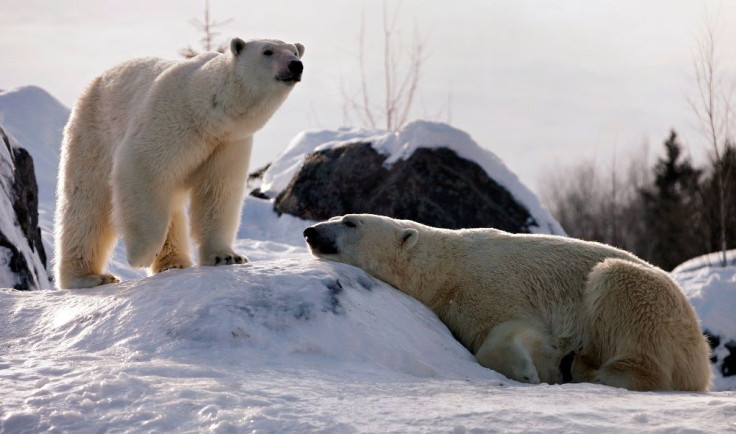Polar Bear Eats Dolphins And Freezes Leftovers, Research Shows

Researchers have observed that polar bears in a fjord in Svalbard, Norwegian High Arctic had dolphins as their meals. According to the report from the New Scientist, it was the first time that researchers have recorded the bears eating a marine mammal.
Jon Aars from the Norwegian Polar Institute and a team of researchers have documented polar bears having white-beaked dolphins for meals. These dolphins have found their way too far on the north side. They have observed the bear’s feeding behaviour many times in the first sighting in 2014, the report says.
Aars said in the report that the bear may have killed two dolphins in the same way that polar bears kill seals. He thought that the sea mammal may have been trapped in a sea ice and surfaced for air in a small hole.
In a photo captured by Aars, a bear was shown to have consumed most of the first dolphin, but it couldn’t eat it all up in a single sitting. The scientists then observed that the bear had a natural freezer and stored the dolphin in its intact state, which researchers believe the bear did to have something to munch on for later.
After the initial observation, scientists found that five more bears came and went for the dolphin carcasses, a behaviour that is not surprising for the researchers. According to them, polar bears are “opportunistic predators” and will eat any species if given a chance.
How the dolphins got trapped in the area was explained by the researchers. They believe that the marine mammals were lured by the warmer waters and eventually got blown off. "We suggest they were trapped in the ice after strong northerly winds the days before, and possibly killed when forced to surface for air at a small opening in the ice," scientists stated in the June 2015 published study found in Polar Research.
To report problems or leave feedback on this article, email: wendylemeric@gmail.com.





















